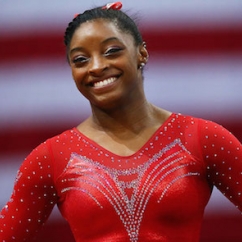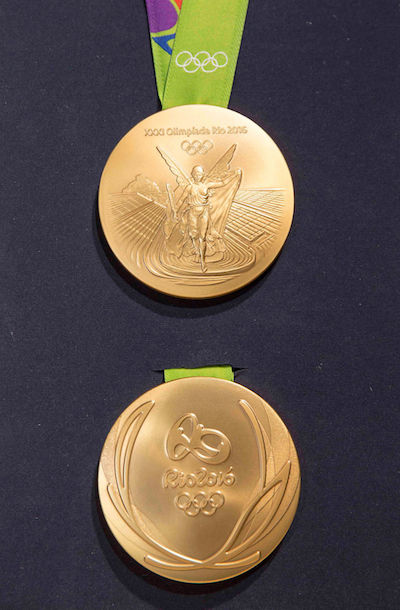Articles and News
A Jewelry Tour Of The 2016 Rio Olympics | August 17, 2016 (0 comments)

Rio De Janeiro, Brazil—In between back flips and high dives, jewelers watching the 2016 Olympic Games in Rio have probably noticed many athletes keeping their jewelry front and center during competition.
Swimmer Kathleen Baker of Team USA (below) made news for three things: winning gold, losing her pearl earring, and overcoming the limitations of Crohn’s Disease in order to compete. Baker, who wore her signature pearl studs in place during her events, unfortunately lost one in the pool during a swim. But after the event, a diver went down to the bottom of the lane she’d been swimming in and found her earring at the bottom of the pool.

For Chinese diver He Zi, it was a diamond and silver moment on the podium. After she received her silver medal for the women’s three-meter springboard, her boyfriend of six years, fellow diver Qin Kai (himself a bronze medal winner for synchronized diving), popped the question at the medal podium, presenting Zi with a diamond ring and a rose under glass. After a bit of hesitation, she said yes. Earlier, Olympics volunteer Marjorie Enya proposed to her longtime girlfriend Isadora Cerullo of the Brazilian rugby team.
There was no shortage of bling on the men’s track at Maracanã Stadium, either. Even before Usain Bolt won his third consecutive gold medal for the men’s 100-meter dash, he was already sporting a fair bit of gold around his neck—as were many of his fellow runners. And Devon Allen, the University of Oregon wide receiver that ran the 110-meter men’s hurdle on Tuesday did so sporting an impressive pair of diamond stud earrings, while diamond studs also sparkled in the ears of Team USA's petite powerhouse gymnast Simone Biles (top of page).

Usain Bolt, the world’s fastest human, wears a gold chain before winning the gold medal in the 100-meter dash at the Olympic Games in Rio. American silver medalist Justin Gatlin and Canadian bronze medalist Andre De Grasse also wore heavy gold chains during the race. Below, University of Oregon's Devon Allen sports diamond ear studs.

The Olympic medals. When the Olympics are held in a country with a rich jewelry tradition, curiosity mounts over the medals themselves. This year, the biggest trend for the most coveted medals in the world was sustainability—a trend that’s also important in the global jewelry industry.
Produced by the Brazilian Mint, the 5,130 medals for the 2016 Olympic and Paralympic Games weigh 500g each, are comprised 30% of recycled silver and bronze, and the ribbons they hang from are 50% recycled PET. Yes, your discarded water bottle could be living a life of fame now!
Meanwhile, the gold medals met strict sustainability criteria from extraction to refining (no mercury used in any part of the process), as well as strict environmental and labor laws. The recycled raw silver in the medals is 92.5% purity (aka sterling) and comes from leftover mirrors, waste solders, and X-ray plates. And 40% of the copper used in the bronze medals came from waste at the Mint itself, melted and decontaminated to provide material for the medals.

The Olympic medal design includes the traditional laurel leaf on the obverse and on the reverse, the traditional etching of Nike, the Greek goddess of victory. The Paralympic medal fronts feature engravings representing the “seeds of courage, persistence and development of the athletes,” according to the Olympics’ official website.







